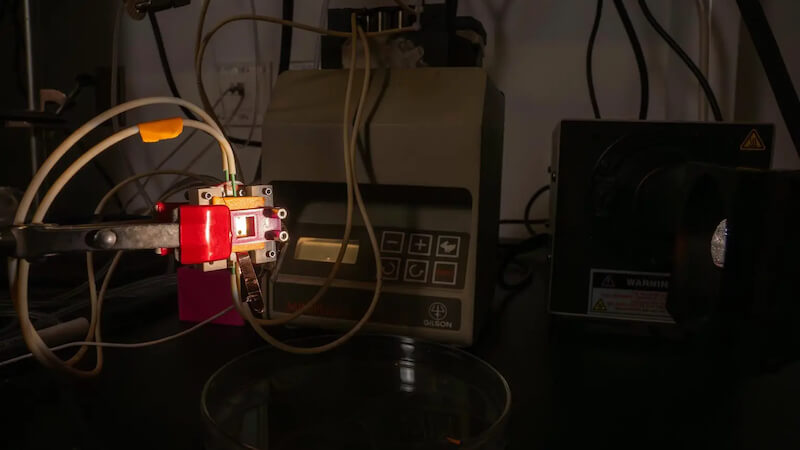New record for hydrogen production using solar energy
Researchers at Rice University in the US state of Texas have developed a novel process to produce hydrogen particularly efficiently from solar energy. The engineers achieved an efficiency of 20 percent.
Hydrogen continues to gain in importance as a potential energy source. The federal government expects demand to increase to up to 110 terawatt hours per year by 2030. Ideally, this is green hydrogen that comes exclusively from renewable sources.
Therefore, universities and companies around the world are researching methods to improve the efficiency of production. Rice University in the US state of Texas recently made a breakthrough. Because a new device achieved an efficiency of over 20 percent. This could accelerate the transformation to sustainable hydrogen.
Novel device generates green hydrogen from solar energy
The developed device has an advanced device of halide perovskite semiconductors and electrocatalysts. In addition to a long service life, this composition also enables the production of such a device to be scaled up. This in turn leads to a drop in the price and makes the adaptation more attractive.
The device achieves an efficiency of 20.8 percent. A barrier protected against corrosion protects the semiconductors from water and at the same time enables the transport of electrons. So far, a compromise has been necessary. Because if you increased the liquid content, the conductivity improved. At the same time, durability suffered. Conversely, durability improved but conductivity decreased.
Device absorbs energy and enables chemical reaction
The end result was a photo-electrochemical cell. Within the construct, energy is absorbed and converted to power a chemical reaction. Previous attempts produced similar devices. However, these showed insufficient efficiency.
The research team explained that using two layers for the barrier is now a solution. One layer serves to protect the semiconductor from water, the other to ensure electrical conductivity between the perovskite layer and the protective layer.
Also interesting:



